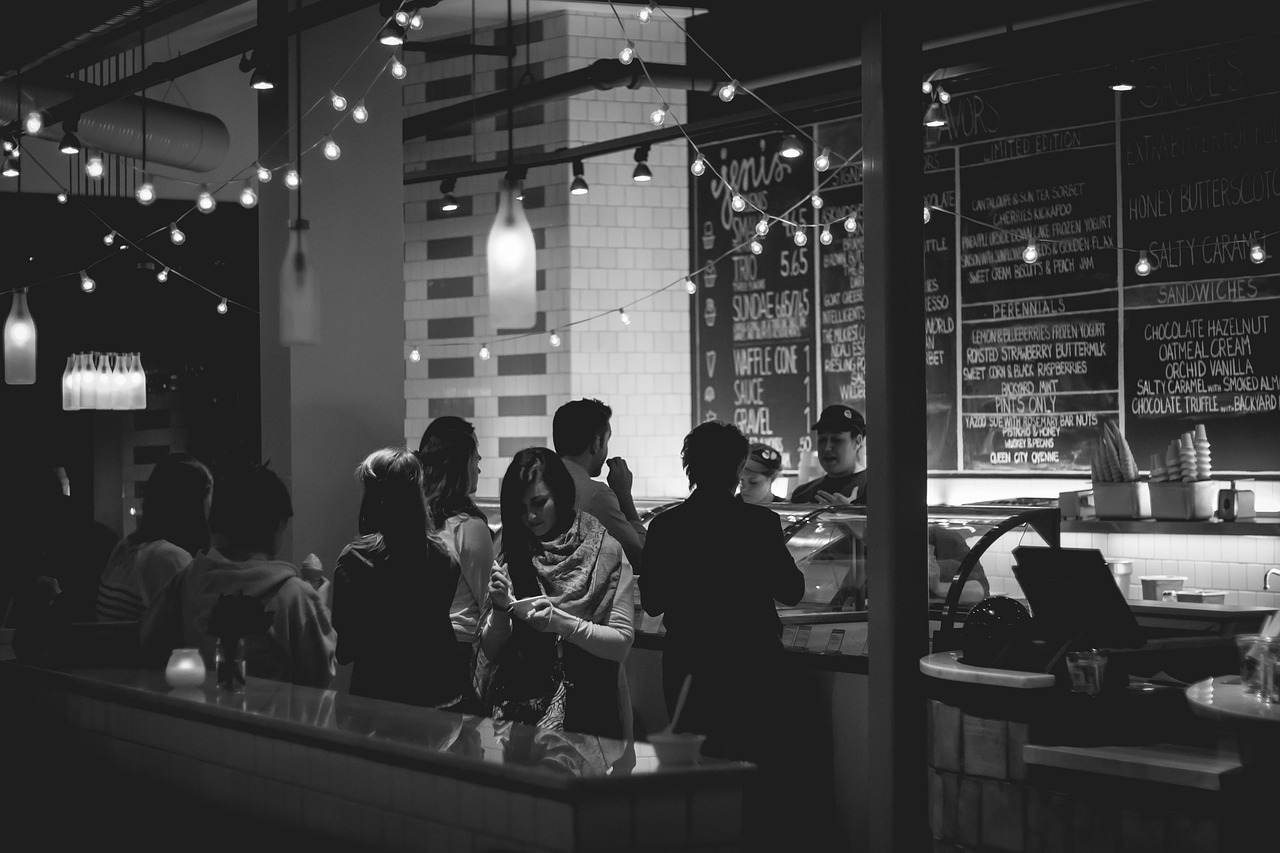A restaurant's ambience and atmosphere are critical to its success. Operators need to know what mix of entertainment, technology, sound and decor is right for their target customer, then deliver that mix in a way that enhances the dine-in experience and leads to repeat business and, ideally, a loyal consumer base.
Many of us underestimate how much thought should go into creating the perfect restaurant atmosphere, but it's extremely important. When it works really well, your customers won't even think about it, when it doesn't work, they may not return without having a clear idea why. The way people feel when they are in a restaurant environment has the ability to effect their purchasing habits. If you walk into a restaurant and are instantly effected negatively by the volume, uncomfortable seating, or a cold temperature, your experience is instantly derailed. In fact, through a study we ran with Technomic, 87% of consumers cited the ambience and a social environment as important in creating a positive impression of a restaurant.
We did some research on what the experts are taking into account when designing a restaurant atmosphere and here are 10 things they take into consideration:
9 Great Design Elements
1. Intensity of light: Lighting is an easy thing to overlook, but can make a big difference in the way your guests perceive the environment around them. Imagine looking in the bathroom mirror and seeing those dreaded shadows emphasizing bags under your eyes. Would that make you want to stick around all night? Probably not. These negative feelings get carried back into your overall dining experience, whether conscious or not, the next time someone suggests that restaurant you might instantly think, "but, the lighting in there is terrible!". Experts have also been known to try and match the lighting with the time of day. Dimming the lights more and more as night falls, but not so much that you need to hover your cell phone light over the menu-- another dreaded issue with improper lighting.
2. Layout of Dining Tables/Understanding Group Behavior: Experts say that the way you structure your dining tables makes a big difference to the comfort level of your guests. That's why you often see 2 top tables next to other 2 top tables as opposed to a larger table next to a 2 top. Understanding group behavior makes this concept a bit stickier. With parties of 2, the likelihood that they may not know each other well or are coming in for a first date is much higher. You want to give these people enough space to feel comfortable having a conversation. They will likely be easily drowned out by a larger party next to them or by a loud kitchen. Paul Kelly, famed designer from Australia says,"Generally, if people talk more, they stay more, eat more and drink more!" You can facilitate that starting with a restaurant layout that makes sense.
3. Comfort level: We've talked a lot about comfort and how it effects purchasing decisions. Going to a restaurant is a release from the normality of dining at home and it should almost feel like a very brief vacation. When you're comfortable in your environment, you stay longer which leads to higher ticket value, but the real value in making a guest feel comfortable is the emotional connection they get from feeling like they are a part of the atmosphere.
4. Acoustics: Acoustics should be different for different types of venues & atmospheres. A bar atmosphere may want a certain level of buzz while a casual dining, family-friendly environment will want to make sure the music and chatter aren't so loud that it effects the ability to conversate. Acoustics can be tough and expensive to manage, especially if you have hard surfaces that sound bounces off of. Many restaurants have found that implementing sound absorbing panels beneath the rugs and tables or draping cloth over hard surfaces has helped them keep noise level under control.
5. Music: Music can help shape the identity of your brand and allow you to cater to the needs of a wide customer base. Many companies choose to curate their own selection while some prefer to go with specific genres or artist types, the most important point being, that it's a good fit for your customer base.
6. Colors: The colors you use may be defining the space more than you think. For example, british designer Paul Kelly, says red inspires hunger. In general, warm colors are stimulants and pale greens, blues and purples tend to be appetite suppressants.
7. Scent: Everything from food to the perfume worn by servers can effect the sensory experience of your guests. Scent triggers an emotional response, that's why when you smell oatmeal cookies, you might instantly be brought back to happy memories at grandma's house where she used to make batches of them! Make sure you are managing unfavorable odors like trash or odd smells from the kitchen, to avoid negative emotional responses.
8. Descriptive menu statements: To sell the food, descriptive menu statements can be extremely effective. Take a look at this difference:
Chicken and Vegetables: Grilled chicken and assorted seasonal veggies
Aunt Becky's Chicken and Vegetables: Just like you remember it. Roasted Chicken sprinkled with rosemary, taragon & lemon served with our seasonal veggies from the garden with drizzled Italian Olive Oil--roasted and tossed in a lemon pepper sauce.
It may seem obvious, but would you rather purchase the first or the second chicken dish? Spending the effort to write up something eye catching can make a large difference in sales.
9. Traffic Flow: Pay close attention to the way your business is set up for employee traffic and customer traffic. Where are your customers entering? Are they having the experience you want them to have right from the beginning? Are there areas of congestion between staff and customers that could be fixed? Walk through your dining room at different times of the day to make sure everything is flowing properly. It's also important to take advantage of space where people are lingering or waiting for longer periods of time. For example, by the bathroom, near the host stand or an area with games are great places to have TV screens or other engaging tools to help minimize the perception of waiting.
Of course, none of this makes a difference if you're not optimizing each piece for the demographic you're hoping to draw. While all of these things individually may not make or break your restaurant's atmosphere, making changes to a few of them will make an impact.
Are you interested to hear customers weigh in on how they prefer to be entertained in a restaurant? In our most recent study with Technomic, we asked a representative sample of customers about their varying preferences for restaurant music. Click below to uncover what they said.







